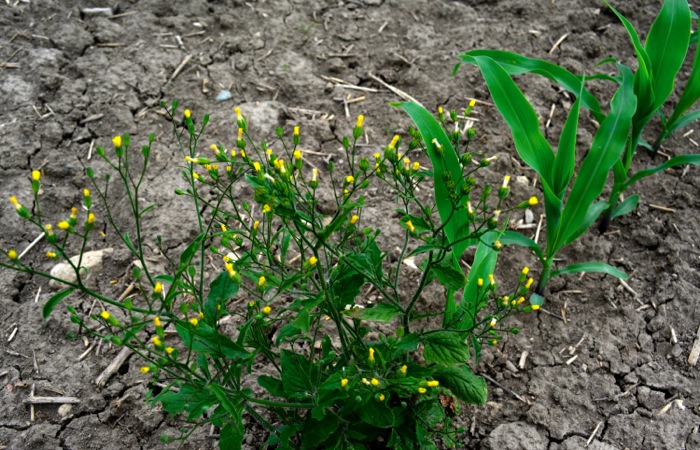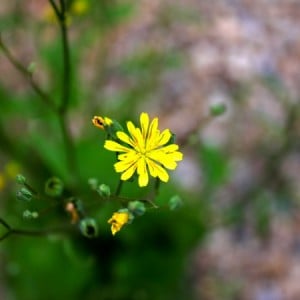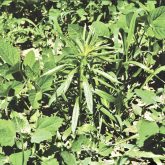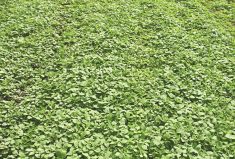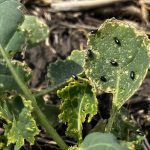The common name of this weed may seem risqué but understandable. The plant’s milky latex, which is believed to have anti-inflammatory and antiseptic properties, was allegedly used in the 16th century to soothe cracking and inflammation of nursing mother’s breasts. Fast-forward to the present day and it’s thought more of as an annoying weed that is increasing in prevalence and is tolerant to a number of herbicides. The distribution of this weed in Ontario is fairly extensive, although a survey conducted in 2014 has shown it to be most prevalent in the county of Huron.
Nipplewort can either have an annual life cycle where it germinates in the spring and sets seed within that season or it can have a winter-annual life cycle where it germinates in the late summer or fall, over- winters and then sets seeds, most typically in the summer. It can be confused with sow thistle and prickly lettuce as it has yellow flowers and a similar stature. However, the leaves lack spines and are much darker and broader, with short fuzzy hairs.
Here’s the challenge. Nipplewort plants with a winter-annual life cycle will be quite large early on in the spring, making them more tolerant to herbicides and less likely to be controlled. Such populations should be targeted in the fall when the plant is smaller and more susceptible to herbicides.
Which herbicides are effective? Based on limited studies, Table 1 provides an overview of what has been learned in Ontario.
What other management “tweaks” could improve control of this species?
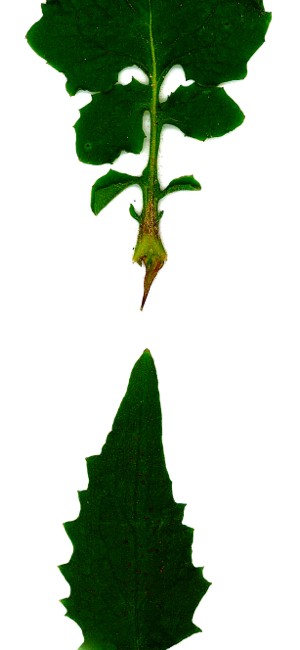
A Finnish study evaluated the impact of cropping practices on weed occurrence in spring cereals over the course of two decades and found an increase in nipplewort over that period which was attributed to a reduction in primary tillage. Therefore, one could assume that the use of tillage at the time when nipplewort is in the seedling stage would be helpful in reducing its population.
A Norwegian study found nipplewort to be less susceptible to herbicide treatments sprayed in the evening compared to morning and midday.
Have a question you want answered? Hashtag #PestPatrol on Twitter to @cowbrough or email Mike.
Read Also

Agronomists share tips for evaluating new crop products and tech: Pt. 3
With new products, new production practices and new technology converging on the agriculture industry at a frenetic pace in recent…

